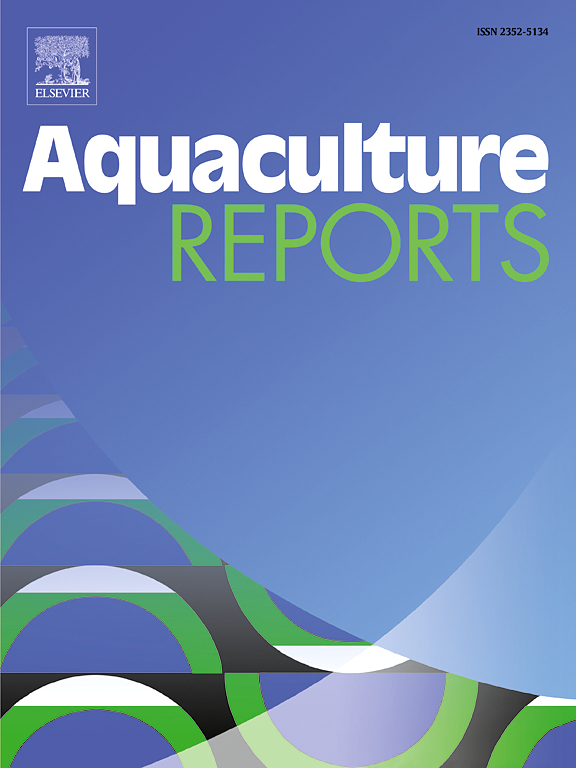Effects of acute cadmium exposure on biochemistry, liver oxidative stress and transcriptomics in Songpu mirror carp (Cyprinus carpio Songpu)
IF 3.2
2区 农林科学
Q1 FISHERIES
引用次数: 0
Abstract
Cadmium (Cd) is a persistent heavy metal that accumulates dose-dependently in aquatic environments, posing a serious threat to the health of aquatic animals. This study investigated the acute toxicity of Cd on Songpu mirror carp (Cyprinus carpio Songpu) with an average body mass of (35.4 ± 0.4) g. The 96-h median lethal concentration (LC50) of Cd was determined, and the safe concentration (SC) for Cd exposure was determined to be one-tenth of the LC50.Based on these, two exposure levels were set, with three replicates for each treatment. Serum biochemical parameters, liver antioxidant enzyme activities, related gene expression, liver transcript levels, and histological changes were examined at 0, 6, 12, 24, 48, 72, and 96 h after exposure to the safety concentration of Cd. Results showed that the 96-h SC of Cd for juvenile Songpu mirror carp was 1.25 mg/L. Cd exposure decreased the contents of total protein and total cholesterol and increased the contents of glucose and triglycerides in the serum. Cd caused hepatocyte swelling with cytoplasmic cloudiness and granulation. Cd significantly decreased liver antioxidant enzyme activities, including superoxide dismutase (SOD), catalase (CAT), and glutathione peroxidase (GPX), and significantly increased malondialdehyde contents. Chronic exposure to Cd significantly up-regulated the gene expression of Keap1 and down-regulated the gene expression of SOD and GPX. KEGG pathway analysis showed that Cd exposure affects lipid and atherosclerosis and steroid biosynthesis in the liver, and regulates immune-metabolism-related TNF signaling pathway, Toll-like receptor signaling pathway, and IL-17 signaling pathway. Overall, chronic exposure to Cd negatively affects serum parameters, reduces hepatic antioxidant capacity, and leads to lipid metabolism disorders and oxidative stress, resulting in immune dysfunction. The present study effectively broadens our understanding of the mechanisms by which Cd exposure damages fish health and provides a theoretical basis for fish liver immune regulation and aquaculture techniques.
求助全文
约1分钟内获得全文
求助全文
来源期刊

Aquaculture Reports
Agricultural and Biological Sciences-Animal Science and Zoology
CiteScore
5.90
自引率
8.10%
发文量
469
审稿时长
77 days
期刊介绍:
Aquaculture Reports will publish original research papers and reviews documenting outstanding science with a regional context and focus, answering the need for high quality information on novel species, systems and regions in emerging areas of aquaculture research and development, such as integrated multi-trophic aquaculture, urban aquaculture, ornamental, unfed aquaculture, offshore aquaculture and others. Papers having industry research as priority and encompassing product development research or current industry practice are encouraged.
 求助内容:
求助内容: 应助结果提醒方式:
应助结果提醒方式:


